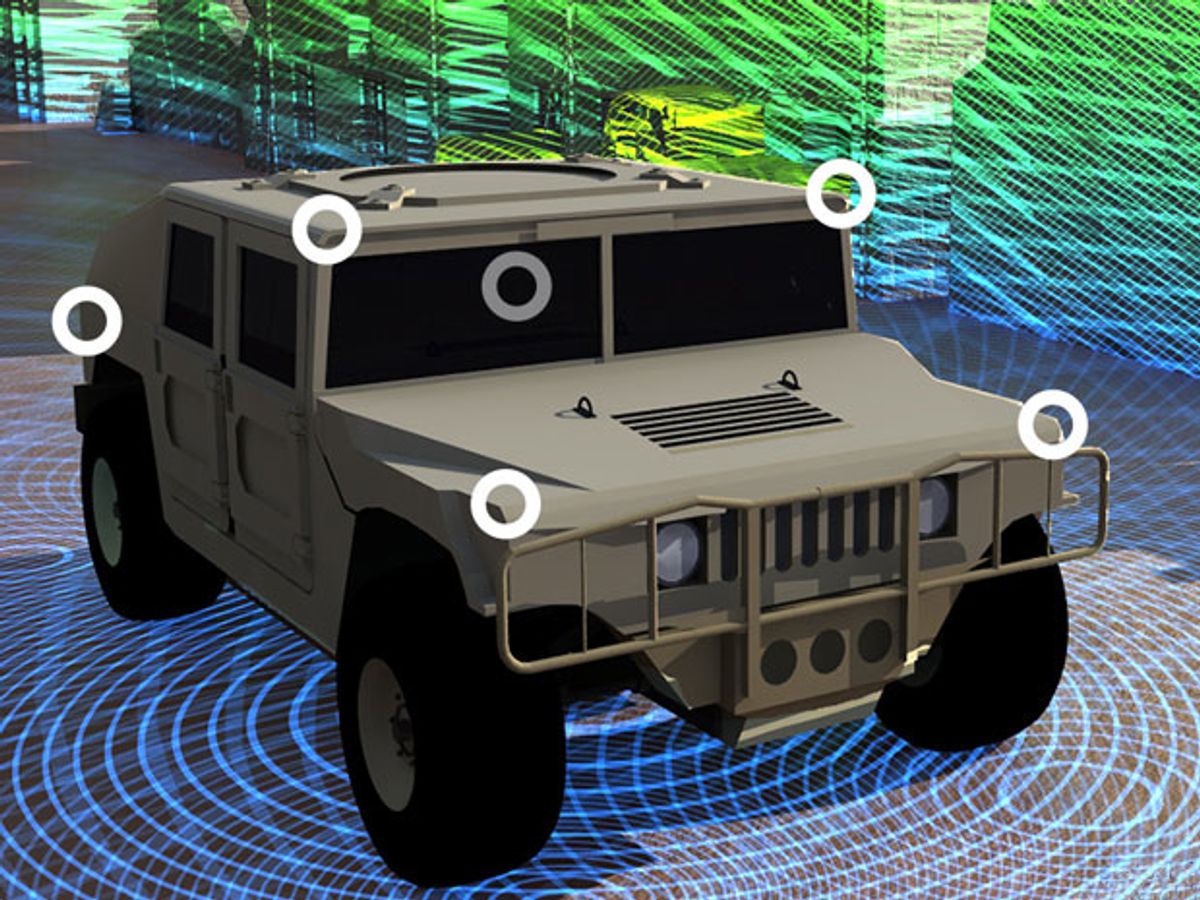You can hide radar behind the grill of your car or under a plastic body panel, but the laser equivalent, lidar, typically sticks out as a box above the bumper or as a tower on the top. That’s because the laser beam must be steered mechanically.
Besides being big and ugly, today’s lidar is expensive, and for that reason rare on the roads. Only the experimental cars carry it. But that will change, according to DARPA.
The defense research agency has just demonstrated a LIDAR-on-a-chip system that steers its electronic beam much as today’s radars do—using arrays of many small emitters that each put out a signal at a slightly different phase. The new phased array thus forms a synthetic beam that it can sweep from one extreme to another and back again 100,000 times a second. That beats today’s fastest laser roof ornaments by a factor of 10,000.
Like all things military, the device has a long name contrived to produce a suitable acronym: Short-range Wide-field-of-view Extremely agile Electronically steered Photonic EmitteR. Sweeper—it rhymes with Reaper.
True, the experimental system covers only a 51-degree field, but that’s the best any one-chip deal has ever managed. And it’s more than enough: Just salt a few of these sensors around a car, and the central controller will piece together a perfect panorama.
The main challenge for the chip’s inventors was how to pull off the beam-forming trick not at radio frequencies but at optical ones, whose waves aren’t even a thousandth as long. “This means that the array elements must be placed within only a few microns of each other and that manufacturing or environmental perturbations as small as 100 nanometers can hurt performance or even sideline the whole array,” DARPA said in a statement.
The project solved those problems with photolithographic wizardry, provided by researchers at the University of California, Berkeley; University of California, Santa Barbara; HRL Laboratories; and MIT (whose work on optical phased array we covered two years ago).
DARPA says there’s every reason to expect the technology to lend itself to mass production. That, of course, would lower the cost per chip—enough to get them into cars, robocopters, and who knows what else.
Philip E. Ross is a senior editor at IEEE Spectrum. His interests include transportation, energy storage, AI, and the economic aspects of technology. He has a master's degree in international affairs from Columbia University and another, in journalism, from the University of Michigan.



